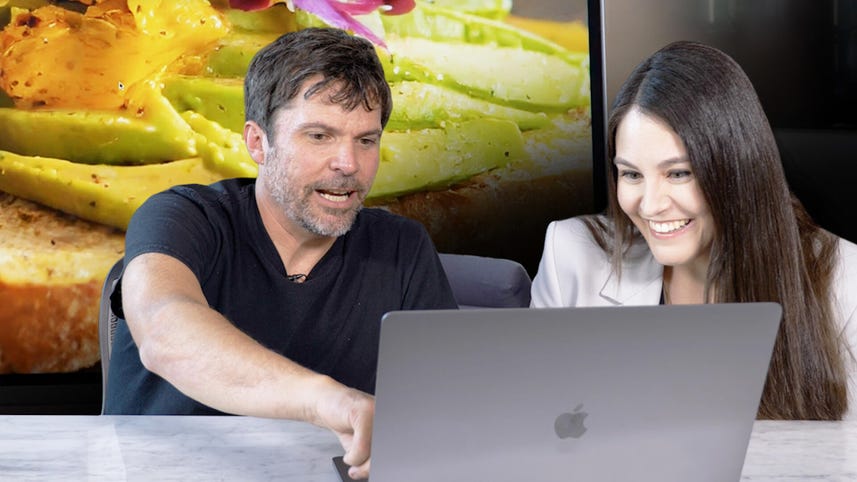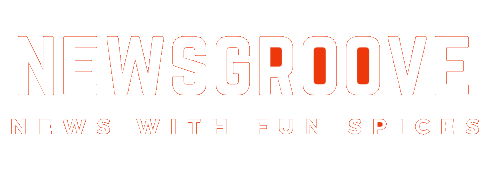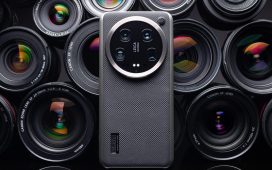
Speaker 1: The order is wrong, so we are going to say the wrong one, and so we’re going to look like fools on the internet.
Speaker 2: Take a look at my photos. Some of these are real others never happened.
Speaker 2: AI and photography is nothing new. Our phones and cameras have used AI to improve photos for years. Think red eye removal or portrait mode. That gives your phone photos an artistic blurry background as if they’ve been taken with a dedicated camera and expensive lens. And [00:00:30] now there’s generative ai, which powers tools and services like Dolly, mid Journey Firefly and Lens ai, and can create photos from scratch with nothing more than a prompt. Just as photography changed drawings and paintings, AI will forever change our photos. But that leads to the question, how do you know what’s real and what isn’t? And does that even matter anymore to find the answer? I assembled two professional photographers, C Nets, James Martin and Lexi tis. I showed them a [00:01:00] series of images, some made completely from ai, others where AI was used to manipulate an image and photos where neither were the case. Let’s see their reactions. We’re going to give you a laptop and just have to figure out, is this photo AI or not? Just that simple. And then we’re going to talk about everything. Okay? Do we win
Speaker 1: A prize?
Speaker 2: Yes, you do. You get to go home.
Speaker 3: It looks pretty real to me.
Speaker 1: It does. I think what gives away that it’s taken on a phone with portrait mode is that kind of weird, kind of sharp cutout around [00:01:30] the bodies of the back is kind of like artificially blurring and then sharpening and then kind of blurring it
Speaker 3: Again. Yeah, the edges are kind of sharpened to the
Speaker 1: Point, but I definitely think that’s a real image.
Speaker 3: And then I do too. The textures of the plate here would be more smooth than less texture. Were at a AI edge and then also just kind some of the imperfections in the plate. No
Speaker 1: Toast doesn’t look like it’s nice. I’d eat that, but it looks like something I’d eat as opposed to a picture perfect thing that I choose off a menu. Right? So that’s why I say it
Speaker 3: Real. It’s not overly perfect.
Speaker 2: This is a real photo. [00:02:00] I am 99% sure that this is not like a portrait mode shot.
Speaker 1: Well, more avocado toast.
Speaker 3: This one looks like ai.
Speaker 1: I don’t know if it’s ai. I wouldn’t say it looks like ai. I think it could go either way. I see what you’re saying, but I think it looks real enough, again, taken on a smartphone, that blurring effect does look like It’s kind of like a food mode or a portrait mode just on the toast. Yeah, it
Speaker 3: Does. There’s something about the texture in the bread.
Speaker 1: I don’t know. You think that looks fake? It
Speaker 3: [00:02:30] Looks very,
Speaker 1: I mean, I’d eat that
Speaker 3: Very thought through by a computer.
Speaker 1: Yeah, but I’d eat that. I think that’s real. Okay, I’m going real. If you’re going fake.
Speaker 2: The second avocado toast. Is AI generated? A hundred percent? No.
Speaker 1: I thought that was the real one.
Speaker 3: It’s like almost too nice looking.
Speaker 1: Now you mentioned that the lime does look kind of weird. The lime does look a little weird too. Probably should have noticed that in the place.
Speaker 3: [00:03:00] Something about this one that just says AI to me,
Speaker 1: There’s something weird happening with the dog’s nose. It’s kind of like it’s not a complete, so actually that makes me think it’s ai.
Speaker 3: Yeah, I think there’s something for me about everything is so direct. Everybody’s too perfectly straight to the camera, including the dog.
Speaker 1: I mean, I have a dog. It’s really hard to get my dog to look straight on in the camera unless I have a treat perfectly positioned behind the phone and the tongue. There’s something weird about the tongue.
Speaker 3: Oh, here, look at his watch. There’s something strange [00:03:30] going on in his watch
Speaker 1: That looks like
Speaker 3: A slug on this. This is an AI photo
Speaker 1: Look, this is a dead giveaway. What phone is this? It’s a slab. It’s
Speaker 3: Very generic.
Speaker 1: I mean, as somebody who covers tech all the time, I can tell that is not a phone I’ve ever seen in my life, except if it’s off a display cabinet, a fake one in a Verizon store or something. It’s fake, isn’t they? Yeah, it
Speaker 3: Looks pretty fake. What’s this right here? This thing. Thumb, finger thing. That’s
Speaker 1: Creepy.
Speaker 3: It’s like a claw. [00:04:00] They look like real headphones. You might actually even know the model.
Speaker 1: They’re the new Bose QCs, I think. I’m not sure of the model number, but it’s just really a lot of depth of field. This
Speaker 3: Looks real to me. Yeah,
Speaker 1: I think so. I’d say real. It’s like
Speaker 3: A real photo. This is ai, these headphones with the wooden
Speaker 1: Veneer, right?
Speaker 3: Yes. It looks a little too text. Again, the texture is almost too,
Speaker 1: Yeah, there’s There’s no depth. Right? [00:04:30] If you look at this side, it looks like it’s a two D rendering. Yeah.
Speaker 3: This one looks less even like a photo than those other ones that I thought
Speaker 1: Were, it kind of looks like Photoshop, generative ai. Like you type in wooden headphones and it would come up with this. Yeah. Bless Mr. Patrick Holland himself. I mean, this is like if Patrick decided to become lasso or become a Harvard professor, I would say this is his [00:05:00] headshot that I would see on his LinkedIn and across the faculty websites and stuff.
Speaker 3: Looks very trustworthy.
Speaker 1: Love it. But a hundred percent ai. I don’t know what’s Patrick. I love you, but I know that you’re not going to become a Harvard professor anytime soon with this better. You just wait. I think anybody who knows Patrick could tell that that’s AI because the fabric doesn’t look real and you have much better tasting clothes. I think the biggest surprise for me was [00:05:30] I look at things with a really critical eye. So I was honestly expecting everything to have a layer of manipulation to it. I was looking for things that didn’t exist as well.
Speaker 3: Totally.
Speaker 1: And in that it kind of backfired, especially on the avocado ones.
Speaker 2: Does it matter that photos are AI or not ai? Or is this whole exercise just a waste of time?
Speaker 1: It’s not a waste of time. I think it’s a really important question. I think it’s largely dependent on, so for example, for a generalistic [00:06:00] application or something like the context of it’s in a newspaper is something that’s been altered, is somebody’s face being changed. But I would say most people just want the best possible image, and we have limited storage. So I take 500 of the same shot trying to find the right one. So if I can have one that’s just manipulated in a way that’s not bending the truth, it’s just making sure that everybody’s looking the right way to the camera. I’m happy just to have that.
Speaker 2: I read over the weekend [00:06:30] about high schoolers taking pornographic images and using AI generated tool to put their classmates’ heads on the image. So the image is not real. But then this image was shared around the school. The kids who are the subject of those images felt violated, felt bullied. So that’s real. But do we need something that not only restricts that, but also penalizes people for doing that?
Speaker 1: I agree that there should be some way of doing this, but I’m just thinking realistically, how would this be enforced? [00:07:00] You’re using the FDA analogy. How does that result in years and years of legal action? And then finally down the track, there’s some sort of resolution. Think about how many images are created and post online every single day. Millions, billions, trillions. Even more than that, trying to regulate that is enormous.
Speaker 2: It doesn’t seem to me like there’s any way of going back. Is this just another chapter turn from when we went from drawing and painting into photography [00:07:30] and now we’re going from photography into AI photography or AI images?
Speaker 3: Probably, yeah. I think you can’t really say whether it’s right or wrong. I guess you can say it’s whether it’s right or wrong in terms of it being a photograph.
Speaker 1: But maybe then the definition of photograph has to change. Yeah.
Speaker 2: Photography has always been complex. Decades ago, photographers use lens selection, shot framing and film chemistry to make alterations in the dark room. Now, Photoshop, smartphone [00:08:00] image processing, generative ai make those analog error alterations look primitive. But before you despair that AI fakery has sucked the fawning utility out of photography. Take a step back. Yeah. It’s true that you need to exercise more skepticism, especially for emotionally charged social media photos of provocative influencers and shocking warfare. But at the same time, the photos you’re more likely to care about personally, those from your friends, family, [00:08:30] and coworkers are far more likely to be anchored in reality. That might even benefit from some of the AI power tools now available to us. And that’s all I’ve got. If you want to know more about the topic of AI imagery, check out CNET for an in-depth exploration on the topic by my pal and colleague Steven Shanklin. But now I want to hear from you. Do you think the benefit AI images bring outweigh our diminished trust in photos, especially online? Let me know [00:09:00] in the comments. Lastly, if you enjoyed this video, give it a thumbs up and thank you for watching.










